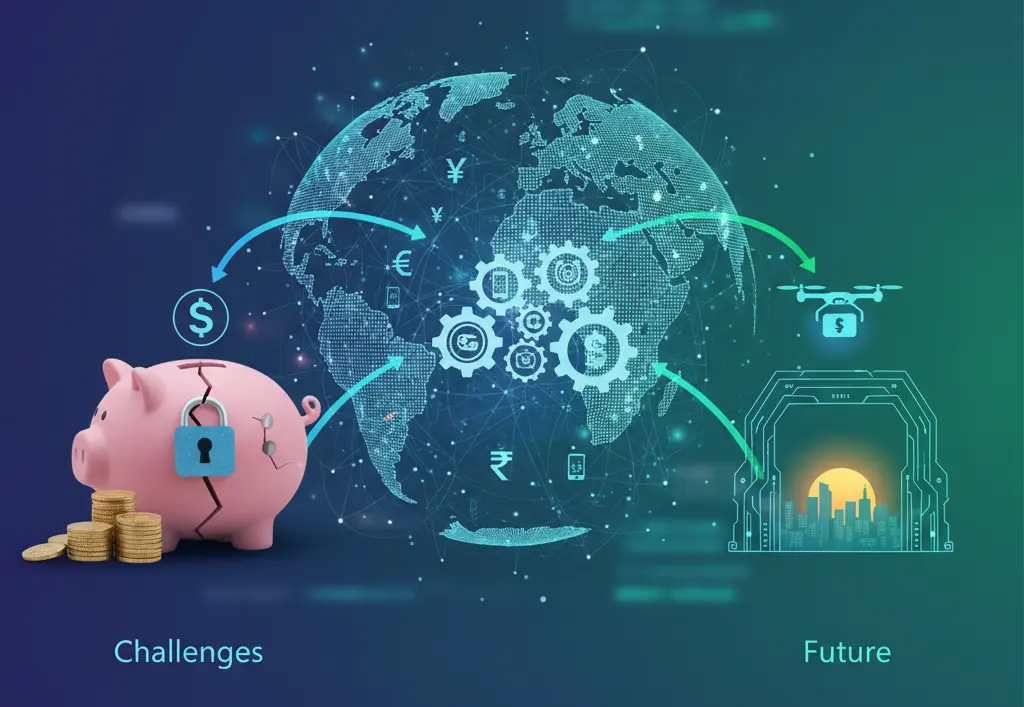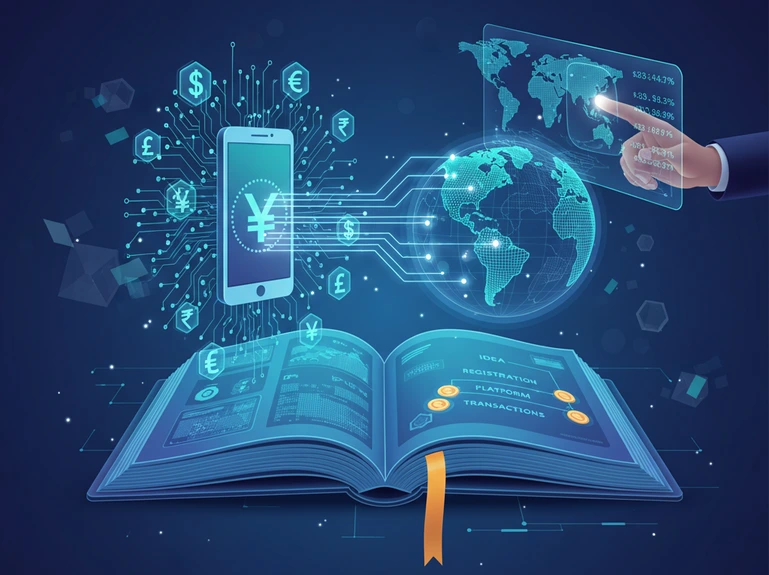
In today’s interconnected global economy, cross-border remittances serve as an economic lifeline for millions of families and a crucial pillar for developing nations. Whether it’s overseas workers supporting families back home, expatriates managing finances across continents, or international businesses conducting cross-border trade, remittance payments play a vital role in sustaining financial inclusion and economic stability.
According to the World Bank, global remittance flows to low- and middle-income countries reached over 860 billion USD in 2024, surpassing foreign direct investment (FDI) and official development assistance (ODA) as the largest source of external financing. This immense flow of capital underscores how critical it is to understand how cross-border remittance payments work — and how to make them faster, safer, and more affordable.
This article explores the fundamentals of cross-border remittance payments, identifies the key challenges faced by individuals and institutions, and discusses how financial technology (fintech) and regulatory evolution are shaping the future of international money transfers.
Cross-border remittance payments refer to the process of transferring money from one country to another. These transactions can be personal (such as a worker sending money to family), commercial (business-to-business payments), or charitable (funding to non-governmental organizations or community projects).
The process typically involves converting one currency into another and complying with multiple layers of regulations that govern international financial transactions. Every remittance must navigate national and international compliance requirements such as Anti-Money Laundering (AML) and Know Your Customer (KYC) protocols. These safeguards ensure that funds move securely while preventing misuse for illicit activities.
Traditionally, banks and money transfer operators (MTOs) have dominated this space. However, with the rise of digital financial services and mobile technology, new channels such as fintech platforms, mobile wallets, and blockchain-based networks are transforming how remittances are sent and received.
Remittances are more than just money transfers — they are a stabilizing force for global economies. In many developing nations, remittance inflows represent a substantial percentage of GDP. For example, in countries such as Nepal, the Philippines, and El Salvador, remittances account for more than 20% of national income.
According to the International Monetary Fund (IMF), remittances provide a steady source of foreign exchange, enhance financial inclusion, and often serve as a buffer during economic shocks. During crises such as the COVID-19 pandemic, global remittances proved remarkably resilient, even when other forms of capital flow declined sharply. This demonstrates their socio-economic importance not only to households but also to national development agendas.
While remittances are vital, the process of sending money across borders is often complex, costly, and time-consuming. Key challenges include high transaction costs, slow processing times, volatile exchange rates, and stringent regulatory compliance.
The World Bank estimates that the global average cost of sending remittances remains around 6.2% of the amount sent, well above the United Nations Sustainable Development Goal (SDG) target of reducing remittance costs to below 3%. Traditional banking channels, correspondent networks, and intermediaries often charge multiple fees — service charges, currency conversion markups, and hidden administrative costs — which erode the value of the final amount received.
Depending on the sending and receiving countries, transfers can take several days to clear. This delay results from the involvement of multiple financial institutions, time zone differences, and compliance checks. For recipients who rely on remittances for day-to-day expenses, delays can cause financial strain.
Exchange rate fluctuations can significantly impact the final value of a remittance. A small change in rates between the time a transaction is initiated and when it’s received can result in tangible losses. Transparency in exchange rate margins remains limited in some traditional systems, which adds another layer of unpredictability.
Compliance with international AML, counter-terrorism financing (CTF), and KYC regulations is mandatory for all cross-border transfers. However, these requirements vary by country and can be challenging to navigate, particularly for smaller institutions or first-time senders. Non-compliance can lead to transaction delays, blocked transfers, or even penalties.
In regions where formal banking infrastructure is underdeveloped, recipients may face barriers to accessing remittance funds. This underscores the importance of digital wallets, agent networks, and mobile-based solutions in improving last-mile delivery.
The remittance landscape has evolved rapidly with the advent of digital technology and financial innovation. Fintech solutions are now driving a new era of cross-border payments marked by greater transparency, speed, and affordability.
Whether sending money to family or managing global payroll for international staff, both individuals and organizations can take proactive steps to optimize cross-border remittance processes.
Cross-border remittances operate within a complex regulatory ecosystem involving multiple jurisdictions, central banks, and global organizations. The Financial Action Task Force (FATF) provides international standards for AML and CTF compliance. Meanwhile, initiatives like the G20 Roadmap for Enhancing Cross-Border Payments (2020) aim to make global payment systems faster, cheaper, more transparent, and inclusive by 2030.
The IMF and World Bank continue to support developing economies in strengthening financial infrastructure and enhancing digital payment systems. Moreover, regional bodies such as the African Union and ASEAN are fostering cooperation to improve interoperability between national payment systems, reducing dependency on costly correspondent banking networks.
The future of cross-border remittances is digital, data-driven, and inclusive. The convergence of fintech, regulation, and global collaboration is setting the stage for a more efficient international payments ecosystem. While legacy systems will persist for a time, their gradual modernization through open banking, blockchain, and instant payment frameworks is inevitable.
In the coming decade, expect to see greater interoperability between national payment systems, the rise of real-time cross-border settlements, and an overall reduction in costs. As digital identity systems and global compliance frameworks mature, remittances will become more transparent and secure for both individuals and institutions.
Cross-border remittance payments are a cornerstone of the global financial ecosystem, linking families, economies, and institutions across borders. Despite persistent challenges — from high costs to complex compliance — technological innovation and international cooperation are rapidly reshaping how money moves worldwide.
As global migration, trade, and digital connectivity continue to grow, efficient and transparent cross-border payment systems will remain essential. The future lies in collaboration between governments, financial institutions, and technology providers to make remittances faster, fairer, and more accessible for everyone.
Want to see how a ready-made platform can accelerate your growth?
Book a demo or consult with us at RemitSo today to see how our platform can power your growth.
It’s the process of transferring money from one country to another, typically for personal, business, or charitable purposes.
They provide essential financial support to households in developing countries and contribute to national income and economic stability.
Common challenges include high transaction costs, regulatory hurdles, exchange rate fluctuations, and lengthy processing times.
Innovations like blockchain, mobile wallets, APIs, and AI enhance transparency, reduce costs, and enable faster transfers.
Key frameworks include AML, KYC, and FATF guidelines to ensure compliance and prevent illicit activity.
Comparing providers, using digital platforms, and avoiding unnecessary intermediaries can help minimize fees.
They leverage technology to streamline transfers, enhance compliance automation, and expand financial inclusion globally.
While blockchain offers significant advantages, it’s more likely to complement rather than fully replace existing financial infrastructures.

